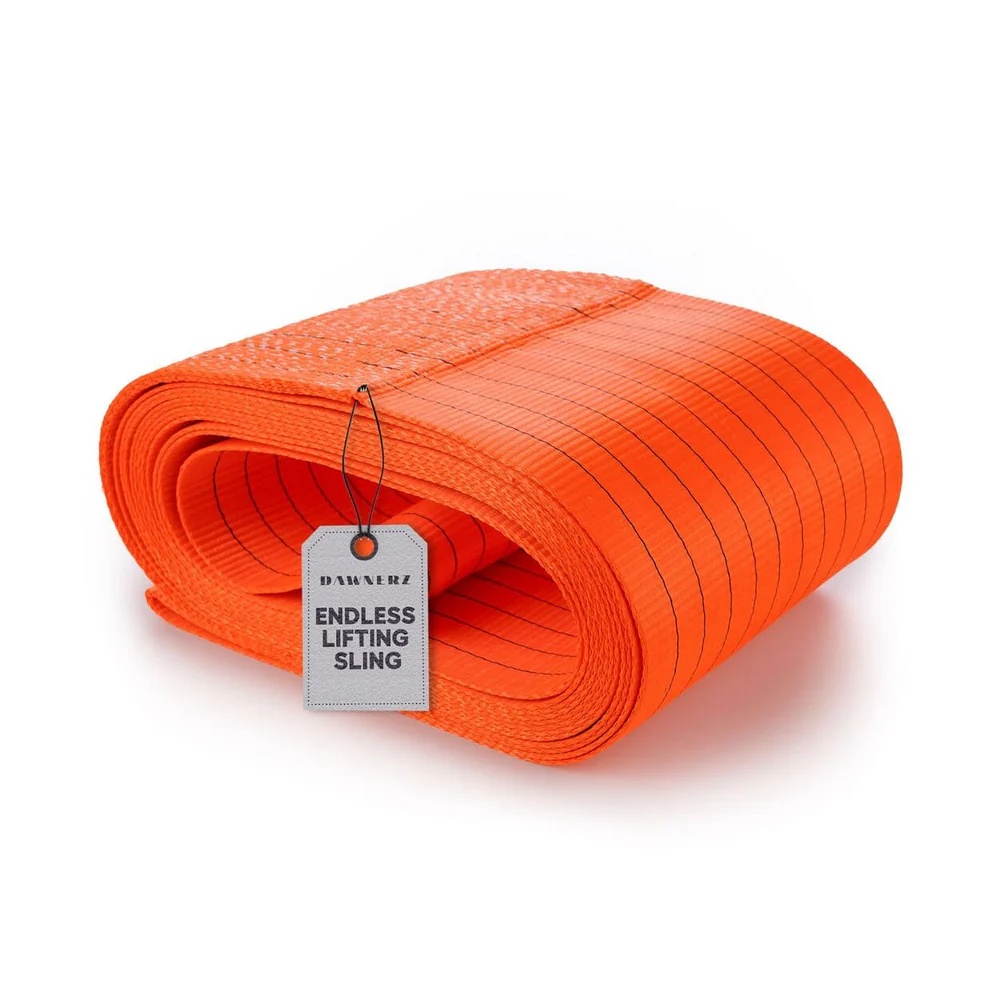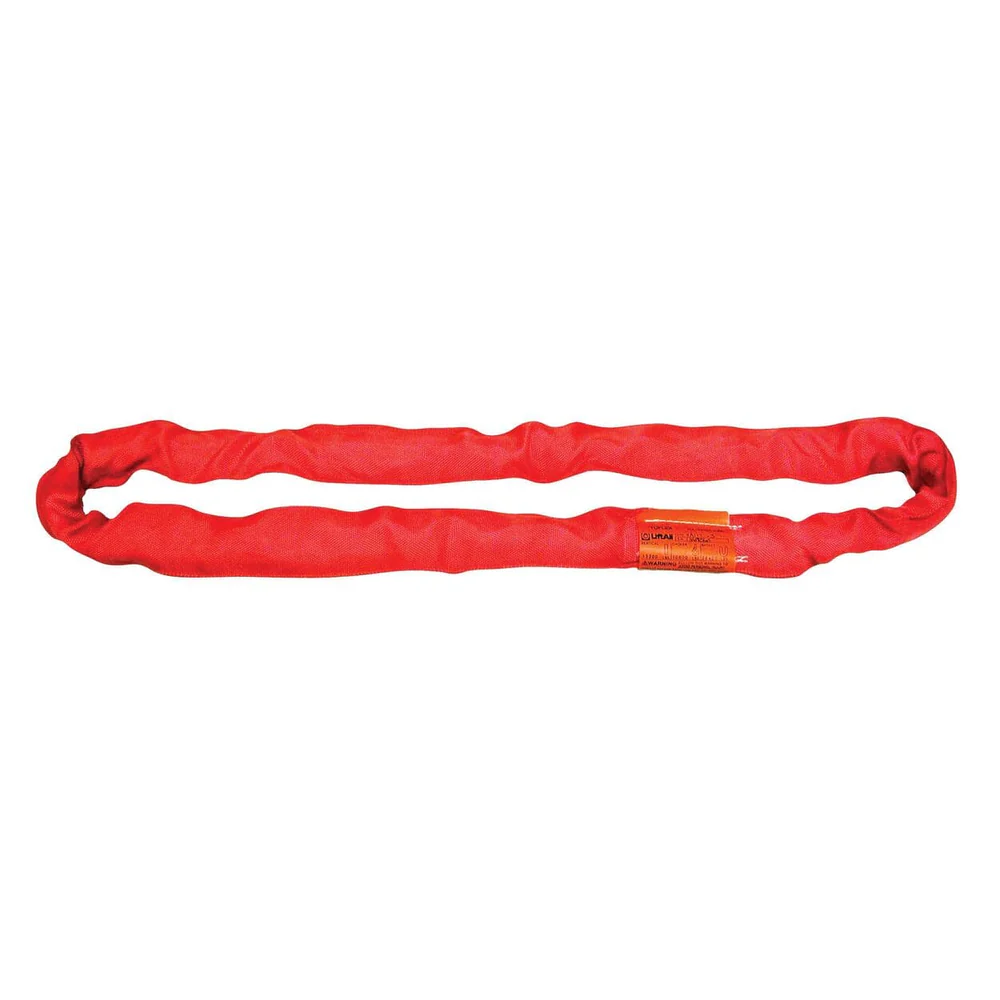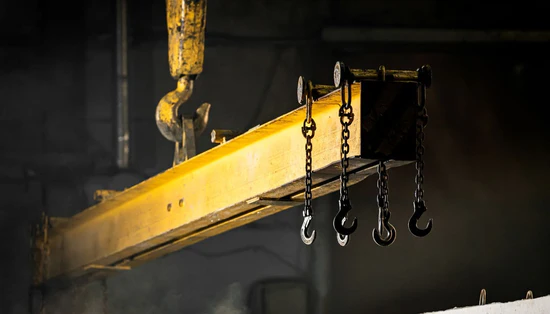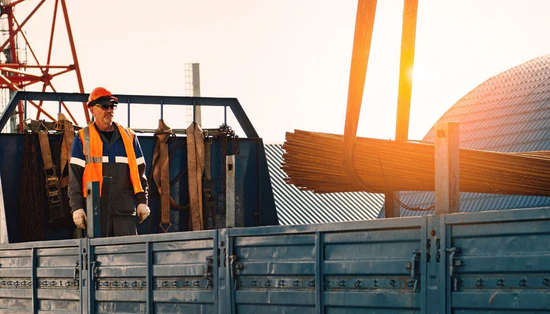At Dawnerz, we take pride in being industry leaders in the production and distribution of high-tenacity polyester lifting gear. Our extensive selection of industrial-strength towing straps and web lifting slings are meticulously crafted to meet the rigorous demands of multiple sectors, ensuring safety, durability, and peak performance in every lift.
This article aims to serve as a comprehensive and up-to-date guide to using endless lifting slings. Whether you're involved in construction, manufacturing, shipping, or any field requiring reliable lifting solutions, this guide will equip you with the knowledge to leverage the benefits, applications, and best practices for effectively and safely utilizing endless slings.
What Are Endless Slings?
Endless slings, also known as soft slings, endless round slings, or endless webbing slings, are indispensable tools in the lifting industry thanks to their unique design and numerous advantages. These slings are incredibly versatile and efficient, characterized by their continuous loop design that lacks a fixed endpoint. This seamless construction not only enhances flexibility but also provides exceptional strength, making them ideal for scenarios where traditional slings may fall short, such as securing irregularly shaped loads.
One of the key benefits of the endless loop sling design is the ability to rotate load points. This feature enables operators to change the orientation of the load, which helps distribute the lifting forces more evenly across the sling. Consequently, the wear on any single point is significantly reduced, resulting in a longer service life for the equipment.
When to Use Endless Slings
When deciding whether endless slings are the right choice for your needs, consider several important factors to ensure they align with your lifting requirements.
Key Considerations:
- Load Characteristics: Assess the weight, shape, and type of load to confirm compatibility with an endless sling.
- Frequency of Use: Endless slings are perfect for operations requiring multiple lifts, thanks to their even stress distribution capabilities.
- Environmental Conditions: Take into account the working environment, including exposure to moisture, chemicals, and UV rays.
- Cost Efficiency: Evaluate the budget and long-term value of the sling, as endless slings often prove cost-effective due to their durability and extended service life.
- Safety Compliance: Ensure the sling meets all safety standards and regulations pertinent to your specific application.
Applications Suitable for Endless Slings:
- Frequent Lifting Operations: Ideal for scenarios where multiple lifts are required, as the rotating contact points extend the sling’s lifespan.
- Moisture-Prone Environments: High-tenacity polyester construction offers excellent resistance to mold, mildew, and UV degradation, making endless slings suitable for outdoor use and in damp conditions like maritime and dockyard sectors.
- Budget-Friendly Solutions: Endless slings provide a cost-effective option without sacrificing performance and safety. They are particularly advantageous for industries seeking to maximize their investment in lifting equipment.
Types of Endless Lifting Slings
Flat Endless Slings
Construction: Flat endless slings are built from high-tenacity polyester yarn, renowned for its strength and durability. These slings are typically created by sewing the ends together or weaving the fabric in a continuous loop without seams. They can also be designed with multiple plies to boost strength.
Usage Scenarios:
Transporting Cylindrical Items: Perfect for lifting and moving cylindrical objects such as steel tubes, pipes, and rolls.
Handling Steel Tubes: Commonly used in industrial settings for loading and unloading steel tubes.
Advantages:
Rotating Contact Points: The endless design allows for rotation of contact points, which helps distribute the load evenly and reduces wear on any single point, prolonging the sling's service life.
Cost-Effectiveness: Flat endless slings are generally more affordable compared to other lifting solutions, making them a budget-friendly option for various industrial applications.

Endless Round Slings
Differences from Flat Slings:
Construction: Endless round slings are typically made from a continuous loop of polyester yarn enclosed in a durable fabric cover. Unlike flat slings, they lack a flat surface and are round in cross-section.
Flexibility: Round slings are more flexible and can conform better to the shape of the load, offering a secure grip and minimizing the risk of damage.
Specific Use Cases and Benefits:
Protection of Delicate Loads: Ideal for lifting delicate or finished surfaces, as the soft fabric cover reduces the risk of scratches or damage.
Even Load Distribution: The round design ensures even load distribution around the sling, enhancing safety and stability during lifts.
Versatility: Suitable for a broad range of applications, including rigging, construction, and marine industries, where flexibility and load protection are crucial.
By understanding the differences and benefits of flat and round endless slings, you can select the best type for your particular lifting needs, ensuring optimal performance and safety.

When using endless slings or roundslings, it is essential to follow best practices to maximize safety and efficiency. Always inspect the sling for any signs of wear or damage before use, and ensure it is rated for the load you intend to lift. Properly wrapping the sling around the load and maintaining a balanced lift will help prevent accidents.Â
Moreover, training personnel on the correct usage and handling of polyester slings is critical to fostering a culture of safety and awareness in the workplace. By adhering to these guidelines, you can fully capitalize on the potential of synthetic web slings, ensuring that your lifting operations are both safe and efficient.
Conclusion
Endless slings are a versatile, cost-effective, and durable solution for various industrial lifting applications. Their endless design allows for even load distribution and rotation of contact points, significantly extending their service life and making them an excellent choice for multiple lift operations. High-tenacity polyester construction provides excellent resistance to abrasions, UV light, and moisture, ensuring reliable performance in a variety of environments.
Compared to other lifting devices such as wire rope, round, and chain slings, endless slings offer unique advantages in terms of handling, flexibility, and protection of the load surface. Whether you need to lift delicate items, cylindrical objects, or heavy loads, endless slings provide a dependable and efficient solution.
In summary, endless slings are a valuable asset in the industrial lifting toolkit. By choosing the right type of endless sling for your specific needs and maintaining them properly, you can achieve safe, efficient, and cost-effective lifting solutions.
Recommended Articles
Door Leaf Processing Equipment
Door Leaf,Door Leaf Equipment,Door Processing Equipment,Door And Leaf
Captain intelligent equipment co., ltd , https://www.2captain.com


